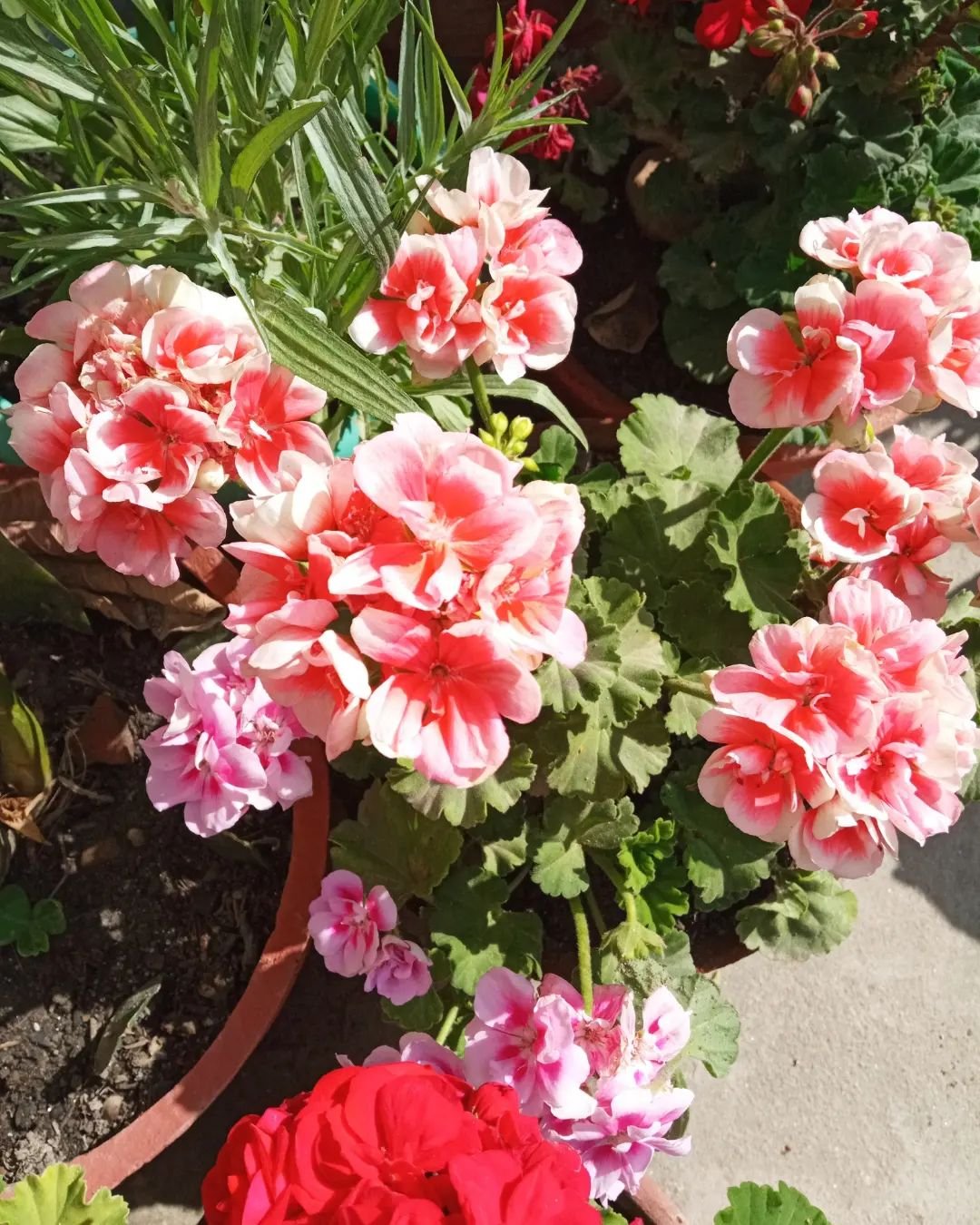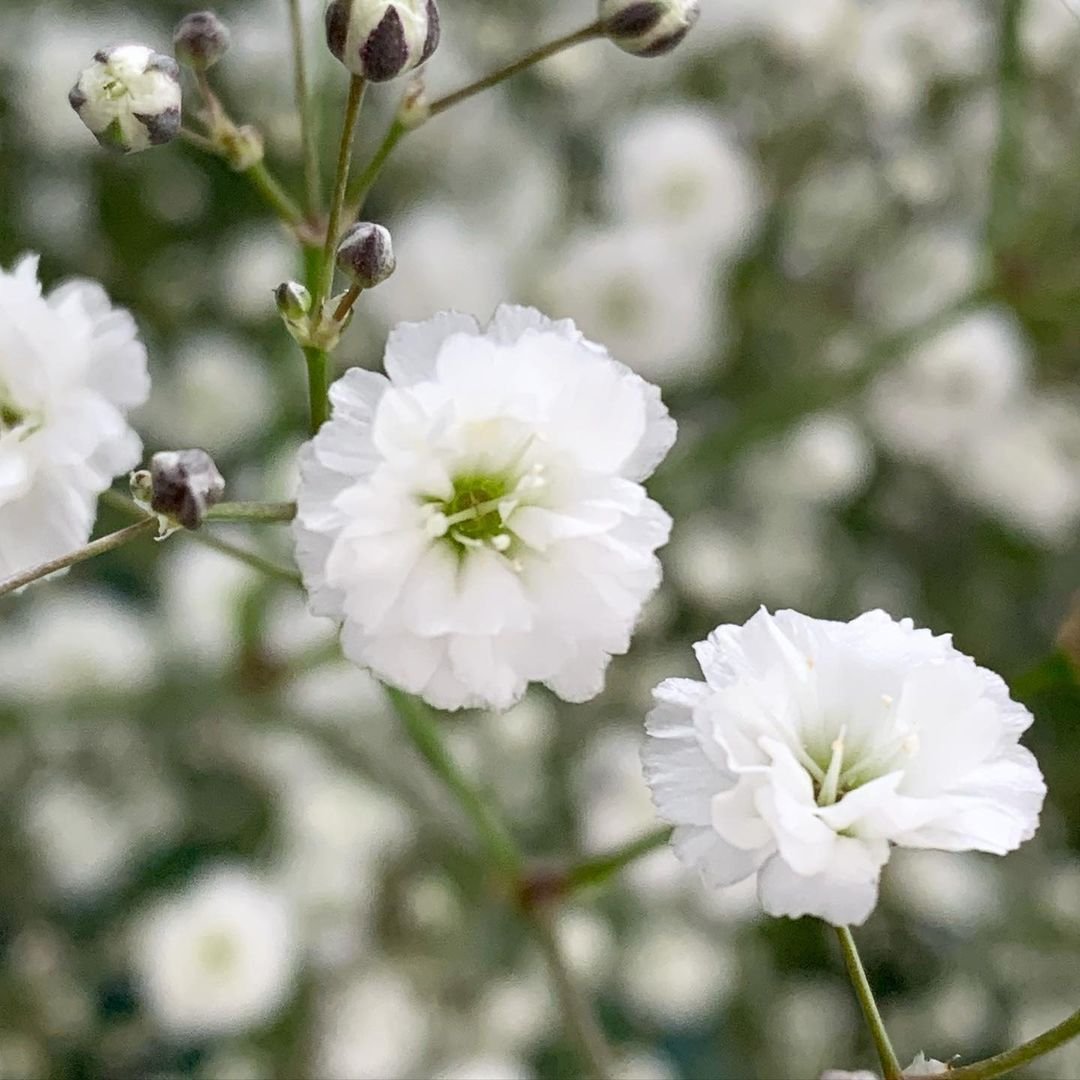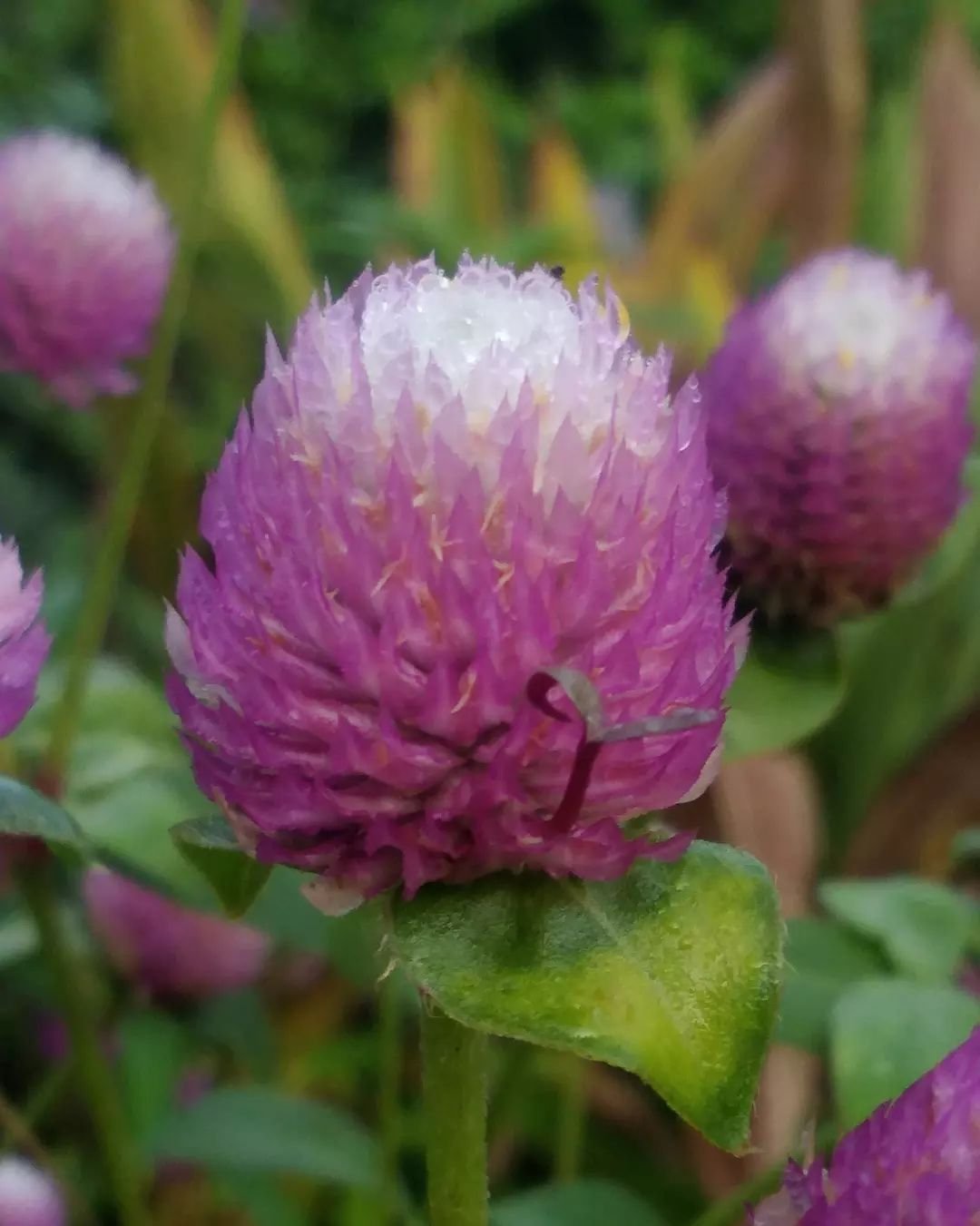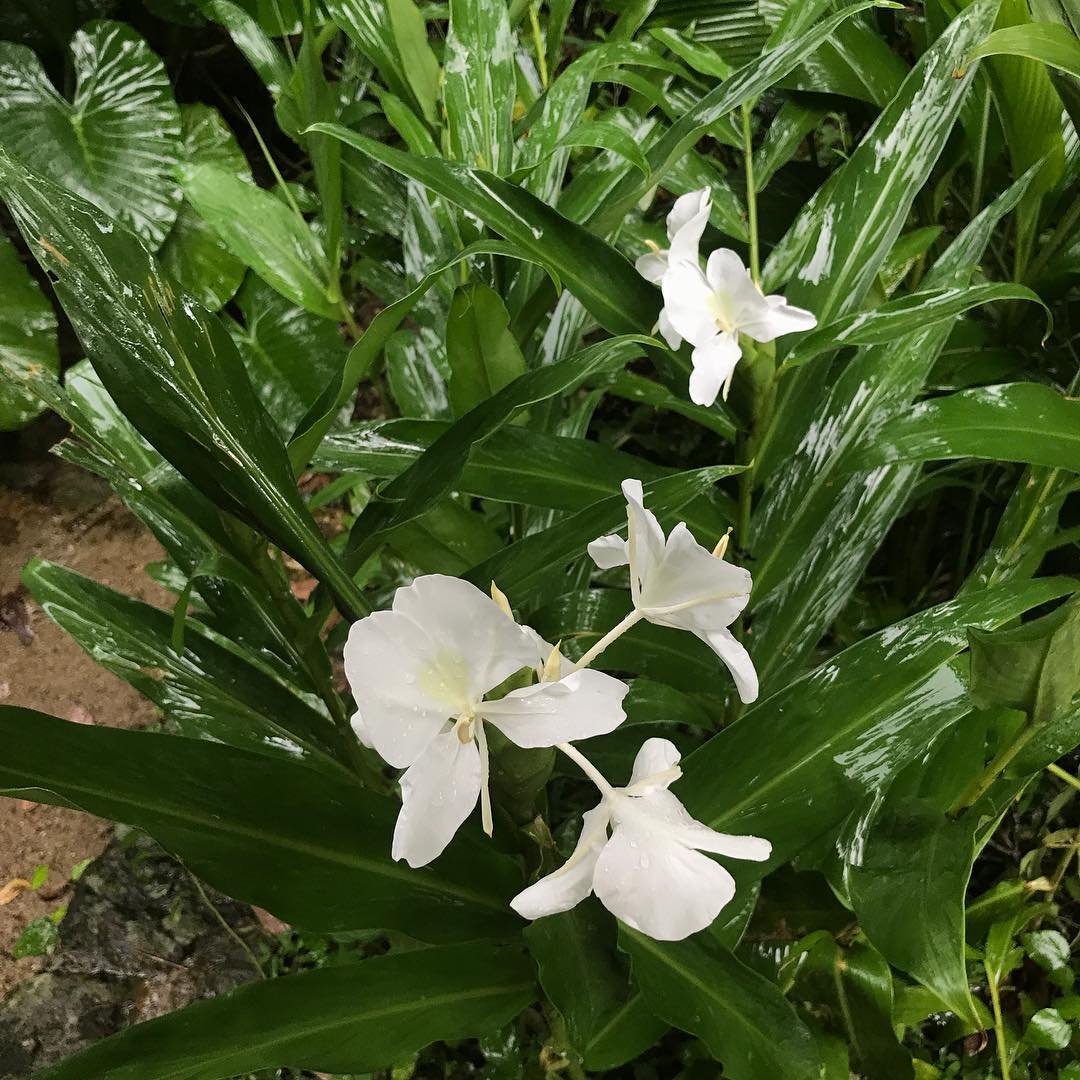Discover 19 stunning flowers that start with G in our comprehensive guide. From the graceful Gardenia to the vibrant Gerbera Daisy, learn about their characteristics and how to grow them in your garden.
Welcome to our garden of ‘G’ flowers! Today, we’re going to explore 19 beautiful blooms that all start with the letter G. Whether you’re a seasoned gardener or just starting out, you’ll find something to love in this diverse group of flowers. Let’s dive in and discover the beauty that nature has to offer!
1. Gardenia

Gardenia Information Chart
| Category | Details |
|---|---|
| Botanical Name | Gardenia jasminoides |
| Common Name | Gardenia, Cape Jasmine |
| Plant Name | Gardenia |
| Zone | 8-11 |
| Sun Exposure | Full sun to partial shade |
| Soil Type | Acidic, well-drained, moist soil |
| Watering | Regular, keep soil consistently moist but not waterlogged |
| Growth Habit | Evergreen shrub |
| Height/Spread | 3-8 feet tall, 3-6 feet spread |
| Special Features | Fragrant white flowers, glossy green leaves, blooms in late spring to summer, attracts pollinators, used in borders and as container plants; sensitive to cold temperatures, can suffer from chlorosis in alkaline soils |
Gardenias are known for their sweet smell and pretty white flowers. They’re a favorite in many gardens.
Growing tip: Gardenias like acidic soil and partial shade. They need regular watering but don’t like wet feet.
2. Geranium

Geranium Information Chart
| Category | Details |
|---|---|
| Botanical Name | Pelargonium spp. |
| Common Name | Geranium |
| Plant Name | Geranium |
| Zone | 10-11 (can be grown as annuals in cooler zones) |
| Sun Exposure | Full sun to partial shade |
| Soil Type | Well-drained, fertile soil |
| Watering | Moderate; water when the top inch of soil is dry |
| Growth Habit | Bushy, mounding |
| Height/Spread | 1-3 feet tall, 1-2 feet spread |
| Special Features | Brightly colored flowers, aromatic leaves, long blooming period, low maintenance, attracts butterflies and hummingbirds, used in containers, borders and as bedding plants |
Geraniums come in many colors and are easy to grow. They’re great for beginners.
Growing tip: Most geraniums like full sun and well-draining soil. They’re pretty drought-tolerant.
3. Gladiolus

Gladiolus Information Chart
| Category | Details |
|---|---|
| Botanical Name | Gladiolus spp. |
| Common Name | Gladiolus, Sword Lily |
| Plant Name | Gladiolus |
| Zone | 7-10 (can be grown as annuals in cooler zones) |
| Sun Exposure | Full sun |
| Soil Type | Well-drained, sandy loam soil |
| Watering | Moderate; keep soil consistently moist during growing season |
| Growth Habit | Upright, tall spikes |
| Height/Spread | 2-5 feet tall, 6-12 inches spread |
| Special Features | Tall, colorful flower spikes, excellent cut flowers, attracts pollinators, blooms in summer, wide range of colors |
These tall flowers come in almost every color. They’re great for cutting and bringing indoors.
Growing tip: Plant gladiolus corms in full sun after the last frost. They need support as they grow tall.
4. Gerbera Daisy

Gerbera Daisy Information Chart
| Category | Details |
|---|---|
| Botanical Name | Gerbera jamesonii |
| Common Name | Gerbera Daisy, Transvaal Daisy |
| Plant Name | Gerbera Daisy |
| Zone | 8-11 (grown as annuals in cooler zones) |
| Sun Exposure | Full sun to partial shade |
| Soil Type | Well-drained, rich and slightly acidic soil |
| Watering | Moderate; allow the soil to dry out slightly between waterings |
| Growth Habit | Rosette-forming, upright flower stalks |
| Height/Spread | 10-18 inches tall, 1-2 feet spread |
| Special Features | Brightly colored flowers, long blooming period, excellent cut flowers, attracts butterflies, blooms spring to fall |
Gerbera daisies have big, bright flowers that look cheerful in any garden.
Growing tip: They like full sun and well-draining soil. Learn more about growing gerberas.
5. Gaillardia (Blanket Flower)

Gaillardia Information Chart
| Category | Details |
|---|---|
| Botanical Name | Gaillardia spp. |
| Common Name | Blanket Flower |
| Plant Name | Gaillardia |
| Zone | 3-10 |
| Sun Exposure | Full sun |
| Soil Type | Well-drained, sandy or loamy soil |
| Watering | Low to moderate; drought-tolerant once established |
| Growth Habit | Mounding, spreading |
| Height/Spread | 12-24 inches tall, 12-24 inches spread |
| Special Features | Long blooming period, vibrant colors, attracts pollinators, drought-tolerant, deer resistant |
These flowers look like daisies with red and yellow petals. They’re great for hot, dry areas.
Growing tip: Plant in full sun. They’re very drought-tolerant once established.
6. Gazania

Gazania Information Chart
| Category | Details |
|---|---|
| Botanical Name | Gazania rigens |
| Common Name | Treasure Flower |
| Plant Name | Gazania |
| Zone | 9-11 (grown as annual in cooler zones) |
| Sun Exposure | Full sun |
| Soil Type | Well-drained, sandy or loamy soil |
| Watering | Low to moderate; drought-tolerant once established |
| Growth Habit | Clumping, spreading |
| Height/Spread | 6-12 inches tall, 6-12 inches spread |
| Special Features | Bright, daisy-like flowers, long blooming season, attracts pollinators, drought-tolerant, deer resistant |
Gazanias have colorful, daisy-like flowers that close at night and on cloudy days.
Growing tip: They love full sun and can handle poor soil. They’re great for coastal gardens.
7. Goldenrod

Goldenrod Information Chart
| Category | Details |
|---|---|
| Botanical Name | Solidago spp. |
| Common Name | Goldenrod |
| Plant Name | Goldenrod |
| Zone | 3-9 |
| Sun Exposure | Full sun to partial shade |
| Soil Type | Well-drained, adaptable to various soil types |
| Watering | Low to moderate; drought-tolerant once established |
| Growth Habit | Upright, clumping |
| Height/Spread | 2-4 feet tall, 1-2 feet spread |
| Special Features | Attracts pollinators, late summer to fall blooms, deer resistant, low maintenance |
Goldenrod has clusters of tiny yellow flowers. It’s great for attracting butterflies.
Growing tip: Plant in full sun. It’s very easy to grow and can spread quickly.
8. Gypsophila (Baby’s Breath)

Gypsophila Information Chart
| Category | Details |
|---|---|
| Botanical Name | Gypsophila spp. |
| Common Name | Baby’s Breath |
| Plant Name | Baby’s Breath |
| Zone | 3-9 |
| Sun Exposure | Full sun |
| Soil Type | Well-drained, sandy or loamy soil |
| Watering | Moderate; prefers dry to medium moisture |
| Growth Habit | Mounded, airy |
| Height/Spread | 1-3 feet tall, 1-2 feet spread |
| Special Features | Drought tolerant, long-lasting blooms, great for cut flowers, attracts butterflies |
This plant has tiny white or pink flowers. It’s often used in bouquets.
Growing tip: Gypsophila likes full sun and well-draining soil. It doesn’t like to be moved once planted.
9. Geum

Geum Information Chart
| Category | Details |
|---|---|
| Botanical Name | Geum spp. |
| Common Name | Geum, Avens |
| Plant Name | Geum |
| Zone | 4-9 |
| Sun Exposure | Full sun to partial shade |
| Soil Type | Well-drained, fertile soil |
| Watering | Regular watering, keep soil moist |
| Growth Habit | Clump-forming, upright |
| Height/Spread | 1-3 feet tall, 1-2 feet spread |
| Special Features | Long blooming period, attracts pollinators, deer resistant |
Geum has bright, cheery flowers on tall stems. They come in shades of yellow, orange and red.
Growing tip: Plant in full sun to partial shade. They like moist, well-draining soil.
10. Gloxinia

Gloxinia Information Chart
| Category | Details |
|---|---|
| Botanical Name | Sinningia speciosa |
| Common Name | Gloxinia |
| Plant Name | Gloxinia |
| Zone | 10-11 (often grown as a houseplant in cooler zones) |
| Sun Exposure | Bright, indirect light |
| Soil Type | Well-draining, rich potting mix |
| Watering | Keep soil consistently moist, but not waterlogged |
| Growth Habit | Tuberous perennial |
| Height/Spread | 6-12 inches tall, 6-12 inches spread |
| Special Features | Large, colorful, bell-shaped flowers, attractive foliage, suitable for indoor gardening |
Gloxinias have big, trumpet-shaped flowers. They’re often grown as houseplants.
Growing tip: They like bright, indirect light and high humidity. Learn about gloxinia care.
11. Globe Amaranth

Here’s a simplified and verified chart for Globe Amaranth (Gomphrena globosa):
| Aspect | Details |
|---|---|
| Botanical Name | Gomphrena globosa |
| Common Name | Globe Amaranth |
| Plant Zone | Zones 2-11 (perennial in zones 9-11) |
| Sun Exposure | Full sun |
| Soil Type | Well-draining, sandy or loamy soil |
| Watering | Moderate |
| Growth Habit | Compact, bushy |
| Height/Spread | 12-24 inches (30-60 cm) tall, 12-18 inches (30-45 cm) wide |
| Special Features | Long-lasting, globe-shaped flowers, attracts pollinators |
These flowers look like colorful little pom-poms. They’re great for dried flower arrangements.
Growing tip: Plant in full sun. They’re drought-tolerant and easy to grow from seed.
12. Godetia

Here’s a simplified and verified chart for Godetia (Clarkia amoena):
| Aspect | Details |
|---|---|
| Botanical Name | Clarkia amoena |
| Common Name | Godetia |
| Plant Zone | Zones 2-10 |
| Sun Exposure | Full sun to part shade |
| Soil Type | Well-draining, fertile soil |
| Watering | Regular, moderate watering |
| Growth Habit | Upright, branching |
| Height/Spread | 12-36 inches (30-90 cm) tall, 6-18 inches (15-45 cm) wide |
| Special Features | Colorful, cup-shaped flowers in shades of pink, red, purple; attracts pollinators |
Godetia has silky flowers that look like azaleas. They come in pink, white and red.
Growing tip: They like cool weather and partial shade. They’re great for spring gardens.
13. Ginger Lily

Here’s a simplified and verified chart for Ginger Lily (Hedychium spp.):
| Aspect | Details |
|---|---|
| Botanical Name | Hedychium spp. |
| Common Name | Ginger Lily |
| Plant Zone | Zones 7-11 |
| Sun Exposure | Partial shade to full sun |
| Soil Type | Rich, moist, well-draining soil |
| Watering | Regular watering, keep soil moist |
| Growth Habit | Clumping, upright |
| Height/Spread | 3-8 feet (0.9-2.4 meters) tall, 2-4 feet (0.6-1.2 meters) wide |
| Special Features | Fragrant flowers, tropical appearance, attracts butterflies |
Ginger lilies have fragrant flowers and tropical-looking leaves. Some types are used to make ginger.
Growing tip: They like partial shade and moist, rich soil. They’re not frost-hardy.
14. Gentian

Here’s a simplified and verified chart for Gentian:
| Aspect | Details |
|---|---|
| Botanical Name | Gentiana spp. |
| Common Name | Gentian |
| Plant Zone | Zones 3-8 |
| Sun Exposure | Full sun to part shade |
| Soil Type | Moist, well-drained soil |
| Watering | Regular watering |
| Growth Habit | Herbaceous, clumping |
| Height/Spread | 6 inches to 3 feet (15 cm to 0.9 m) tall, depending on species |
| Special Features | Bright blue or white trumpet-shaped flowers, prefers cool climates |
Gentians are known for their intense blue flowers. Some types are used in herbal medicine.
Growing tip: Most gentians like cool temperatures and moist, acidic soil.
15. Guzmania

Here’s a simplified and verified chart for Guzmania (Guzmania spp.):
| Aspect | Details |
|---|---|
| Botanical Name | Guzmania spp. |
| Common Name | Guzmania |
| Plant Zone | Zones 10-12 (typically indoor plants) |
| Sun Exposure | Bright, indirect light |
| Soil Type | Well-draining potting mix |
| Watering | Keep soil consistently moist |
| Growth Habit | Rosette-forming, epiphytic |
| Height/Spread | 8-24 inches (20-60 cm) tall, 8-16 inches (20-40 cm) wide |
| Special Features | Colorful bracts, long-lasting flowers, ideal for indoor décor |
Guzmanias are bromeliads with colorful, long-lasting flower spikes.
Growing tip: They’re often grown as houseplants. They like bright, indirect light and high humidity.
16. Gaura

Here’s a simplified and verified chart for Gaura:
| Aspect | Details |
|---|---|
| Botanical Name | Gaura spp. |
| Common Name | Gaura |
| Plant Zone | Zones 5-9 |
| Sun Exposure | Full sun |
| Soil Type | Well-draining, sandy or loamy soil |
| Watering | Drought tolerant, moderate watering |
| Growth Habit | Upright, clumping |
| Height/Spread | 1-4 feet (30-120 cm) tall, 1-3 feet (30-90 cm) wide |
| Special Features | Delicate, butterfly-like flowers that sway in the breeze |
Gaura has delicate pink or white flowers on long, waving stems. It’s also called wandflower.
Growing tip: Plant in full sun. It’s drought-tolerant and attracts butterflies.
17. Grevillea

Here’s a simplified and verified chart for Grevillea:
| Aspect | Details |
|---|---|
| Botanical Name | Grevillea spp. |
| Common Name | Grevillea |
| Plant Zone | Zones 9-11 |
| Sun Exposure | Full sun |
| Soil Type | Well-draining, sandy or loamy soil |
| Watering | Low to moderate water needs |
| Growth Habit | Bushy, upright |
| Height/Spread | 3-20 feet (1-6 meters) tall, depending on species |
| Special Features | Unique, needle-like foliage, profuse blooms attracting birds and pollinators |
Grevilleas are Australian plants with unusual, spider-like flowers. They come in many colors.
Growing tip: They like full sun and well-draining soil. They’re drought-tolerant once established.
18. Golden Chain

Here’s a simplified and verified chart for the Golden Chain Tree (Laburnum anagyroides):
| Aspect | Details |
|---|---|
| Botanical Name | Laburnum anagyroides |
| Common Name | Golden Chain Tree |
| Plant Zone | Zones 5-7 |
| Sun Exposure | Full sun |
| Soil Type | Well-draining, fertile soil |
| Watering | Moderate water needs |
| Growth Habit | Small tree, spreading |
| Height/Spread | 15-25 feet (4.5-7.5 meters) tall, 15-20 feet (4.5-6 meters) wide |
| Special Features | Pendulous clusters of yellow flowers in late spring, toxic seeds |
This small tree has long clusters of yellow flowers in spring. It’s very pretty but all parts are poisonous.
Growing tip: Plant in full sun to partial shade. It likes well-draining soil.
19. Gilia

Here’s a simplified and verified chart for Gilia:
| Aspect | Details |
|---|---|
| Botanical Name | Gilia spp. |
| Common Name | Gilia |
| Plant Zone | Zones 3-10 |
| Sun Exposure | Full sun to part shade |
| Soil Type | Well-draining soil |
| Watering | Moderate water needs |
| Growth Habit | Upright, bushy |
| Height/Spread | 6 inches to 3 feet (15 cm to 0.9 m) tall, depending on species |
| Special Features | Clusters of colorful, trumpet-shaped flowers, attracts pollinators |
Gilia has clusters of small, trumpet-shaped flowers. It’s great for wildflower gardens.
Growing tip: Most gilias like full sun and well-draining soil. They’re good for dry gardens.
From the sweet-smelling gardenia to the cheerful gerbera daisy, these 19 flowers that start with G show how diverse and beautiful nature can be. Whether you’re looking for something easy to grow like geraniums or something more exotic like ginger lilies, there’s a G flower for every garden.
Remember, when you’re planning your garden, think about:
- How much sun your garden gets
- What type of soil you have
- How much water the plants need
- What climate you live in
Every flower has its own needs, so it’s important to choose plants that will do well in your specific garden conditions.
Gardening is a great way to connect with nature, get some exercise and create beauty around your home. Why not try growing some of these G flowers in your garden? You might discover a new favorite!
Happy gardening and may your garden be full of beautiful G flowers!








Leave a Reply